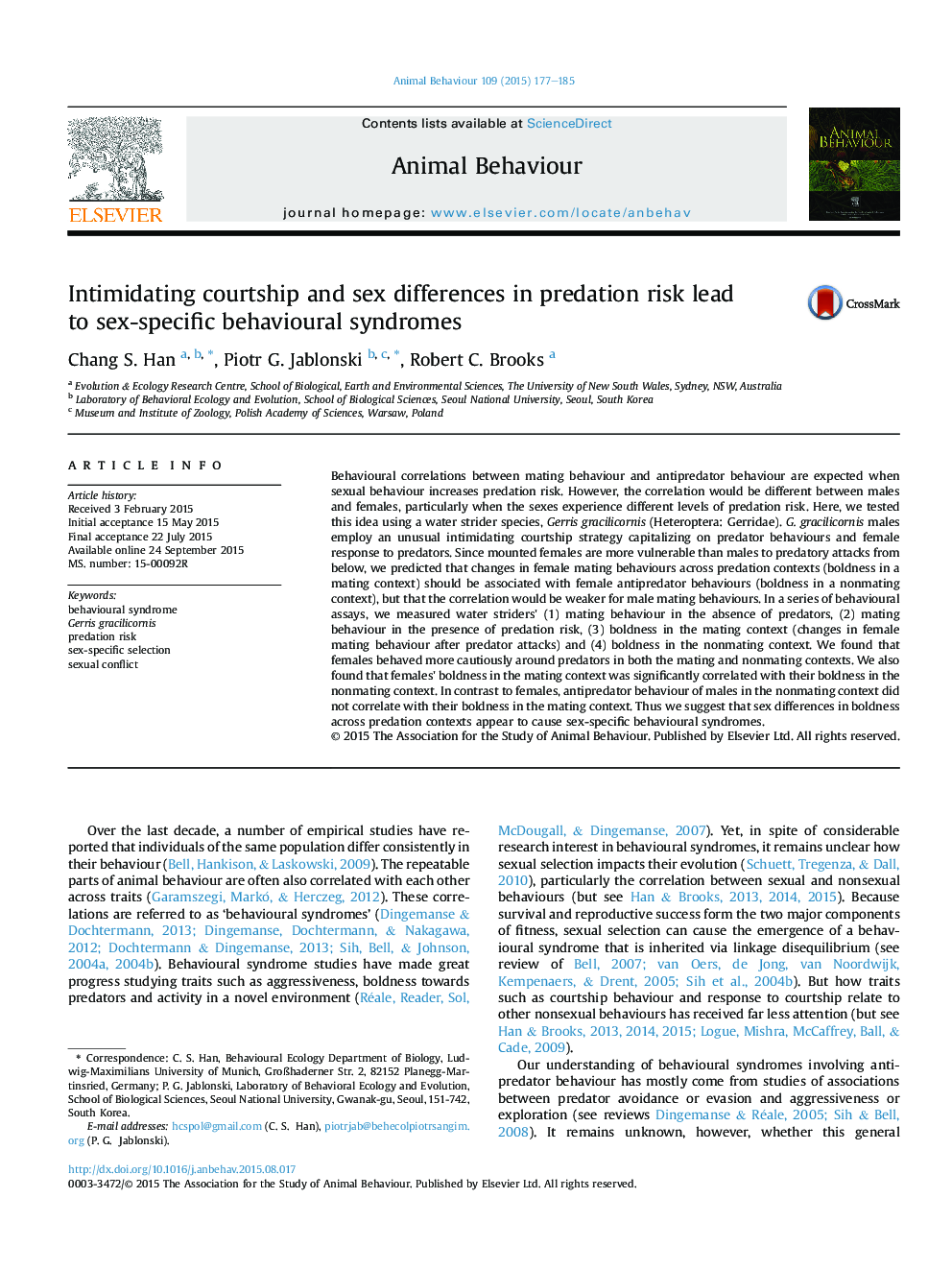| Article ID | Journal | Published Year | Pages | File Type |
|---|---|---|---|---|
| 8489595 | Animal Behaviour | 2015 | 9 Pages |
Abstract
Behavioural correlations between mating behaviour and antipredator behaviour are expected when sexual behaviour increases predation risk. However, the correlation would be different between males and females, particularly when the sexes experience different levels of predation risk. Here, we tested this idea using a water strider species, Gerris gracilicornis (Heteroptera: Gerridae). G. gracilicornis males employ an unusual intimidating courtship strategy capitalizing on predator behaviours and female response to predators. Since mounted females are more vulnerable than males to predatory attacks from below, we predicted that changes in female mating behaviours across predation contexts (boldness in a mating context) should be associated with female antipredator behaviours (boldness in a nonmating context), but that the correlation would be weaker for male mating behaviours. In a series of behavioural assays, we measured water striders' (1) mating behaviour in the absence of predators, (2) mating behaviour in the presence of predation risk, (3) boldness in the mating context (changes in female mating behaviour after predator attacks) and (4) boldness in the nonmating context. We found that females behaved more cautiously around predators in both the mating and nonmating contexts. We also found that females' boldness in the mating context was significantly correlated with their boldness in the nonmating context. In contrast to females, antipredator behaviour of males in the nonmating context did not correlate with their boldness in the mating context. Thus we suggest that sex differences in boldness across predation contexts appear to cause sex-specific behavioural syndromes.
Related Topics
Life Sciences
Agricultural and Biological Sciences
Animal Science and Zoology
Authors
Chang S. Han, Piotr G. Jablonski, Robert C. Brooks,
